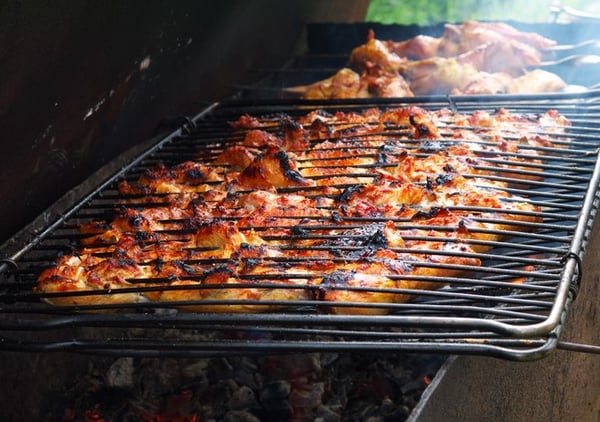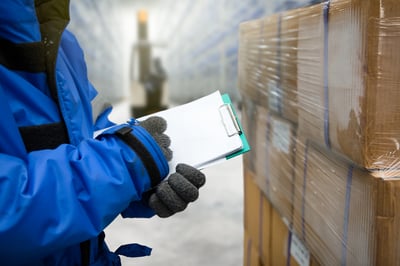 Much like IoT has invaded just about every household, commercial, and industrial device, more and more markets are making use of motion control and lift assist technology. Buyers in a growing number of industries not only appreciate, but also expect motion control to take their product to another level, whether it’s:
Much like IoT has invaded just about every household, commercial, and industrial device, more and more markets are making use of motion control and lift assist technology. Buyers in a growing number of industries not only appreciate, but also expect motion control to take their product to another level, whether it’s:
- An appliance
- A medical application
- Furniture
- Office equipment
- An industrial application
But what happens when the design engineer or R&D team is creating a product that has to function at extreme ends of the temperature scale? This question is crucial for:
- BBQ grill lid hinges
- BBQ drum smoker lid hinges
- Oven door hinges
- Commercial freezer door hinges
- Chest freezer lid hinges & other cold storage door hinges
- Cold frame hinges
- Other products that must work efficiently in very hot or very cold conditions
To get the best performance and life expectancy out of your product, determine what type of spring or hinge is best for these applications. Audit your product design and make sure you have the most temperature-resistant material, finish, and spring type. To help you do that, here’s a comprehensive heavy-duty hinge design guide for extreme temperatures.
Heavy-Duty Hinge Design Guide for High Heat
Since we know a traditional hinge won't do, here are two points to consider: What’s the most heat-resistant metal you can afford, and what’s the most heat-resistant finish you can afford? Your answers should depend on the application itself, and the anticipated level of heat exposure.
For many applications, high-temperature paint or powder coating on steel components will perform just fine. Or you could choose a heavy-duty stainless steel hinge; there are many stainless grades ideal for beating the heat.
The location of the hinge is an important factor here, too. The closer your spring or hinge is to the heat, the more expensive, temperature-resistant material you'll need.
Most Heat-Resistant Metal for Hinges
Let’s say that the standard material has a maximum service temperature of 275° F. If your gas spring (also called a gas cylinder) or mechanical hinge will be exposed to higher temperatures than that, you need a special high-temperature hinge
- Consider something like chrome silicon, which is capable of handling temperatures up to 475°.
- If the temperature will go beyond that, try 17-7PH stainless steel, which has a maximum surface temp of 600°.
- Still not enough? For the most extreme ends of the heat spectrum, there is a new family of austenitic nickel-chromium-based superalloys called Inconel. These alloys are resistant to oxidation and corrosion, and are well-suited for extreme temperatures, with a maximum surface temp of 700° for Inconel 600 spring wire. That number varies based on the alloy you use.
The one big consideration, of course, is that the price of your heat-resistant hinge goes up as the temperature threshold increases.
Hinge Finishing
Any powder coat or paint finish you use has to be a special temperature-resistant mix. A plated finish such as chrome or nickel is also an option.
Zinc is not a good option, because it will burn off in high temperatures. This rules out using galvanized steel in your hinge design.
Spring Lubricants
For great product longevity, you need a great high-temperature lubricant -- for oven door hinges, grill lids, and a host of other applications.
Most lithium grease breaks down at 300° or less, although additives can increase this limit. For high-heat alternatives, look at a silicon or Teflon-based lubricant, which can get you to a higher maximum temperature, although they do tend to dry out over time. Graphite is another temperature-resistant material that provides lubrication.
Can Gas Springs Work in High Temperatures?
The short answer is: Nope.
Some engineers might consider gas springs as a cost-saving measure in lieu of heavy-duty mechanical spring hinges or counterbalances, but be aware that they can actually explode when exposed to heat. They’re made of compressed gas and oil, so as you heat them the gas expands and exceeds the rated pressure for the spring.
Most recommendations on gas springs only go up to 176°. There are specialized gas cylinders that can exceed this number in exchange for a higher cost, but not enough to survive in a grill, among other applications.
Gas spring manufacturers typically design them so the seals fail before the cylinder itself fails, because the cylinder failing is more dangerous to bystanders. Either way, you don’t need exploding springs in your product design. When a gas spring ruptures, you have no force supporting your lid or cover.

Heavy-Duty Hinge Design for Extreme Cold
When your design calls for, say, a deep freezer door hinge or a commercial cold room door hinge, specific materials, lubricants, and finishes aren’t as important as in high-heat situations. What really matters is that you’re using a mechanical hinge design rather than a gas cylinder.
Most Cold-Resistant Metal for Hinges
Bearings on a hinge can get very stiff in the winter or in other low-temperature applications. Depending on the type of steel used, they might not hold up well and could even crack.
You may want to stick to the 300 series of stainless steels for icy applications, while cryogenic-level applications can only use certain nickel steel alloys.
Why Gas Springs Fail in Extreme Cold
Once again, gas springs are not an option because gas contracts in the cold.
Very low temperatures cause gas springs to leak, leading to a pressure drop. Although your gas springs won’t explode like they do in high temperatures, they will lose force. This is a common complaint with those who buy cheap gas springs of poor quality.
Mechanical Springs & Counterbalances: The Safer Way
It might seem like gas springs are a quick fix -- and they are, if you want cheap and off-the-shelf. But in the long run, a mechanical spring is going to save you long-term dollars and prevent potential safety issues.
Because there’s no gas inside a mechanical hinge, there’s no risk of explosion. You can also adjust a mechanical spring midlife, an option unavailable with gas springs.
3 Clutch Hinge Design Considerations
Product design for extreme temperatures requires careful planning and testing. This is even truer when springs and hinges are involved:
- How long will your hinges be exposed to extreme temps -- intermittently or all the time?
- How close will they be to the source of the heat/cold?
- What other qualities does your hinge need (corrosion resistance, etc.) that may impact which material you settle on?
Once you answer all these questions, you’ll have a better idea of what type of spring makes sense for your project, and what type of materials and finishes will work best. You can also use the button below to ask an expert engineer directly.
(Editor's note: This article was originally published in August 2019 and was recently updated.)
.png?width=12000&height=2033&name=WeberKnappLogo_white%20(1).png)


